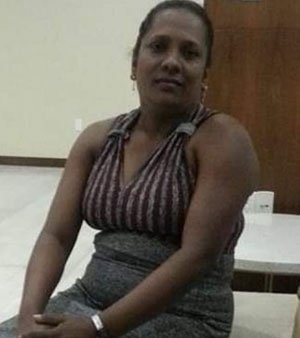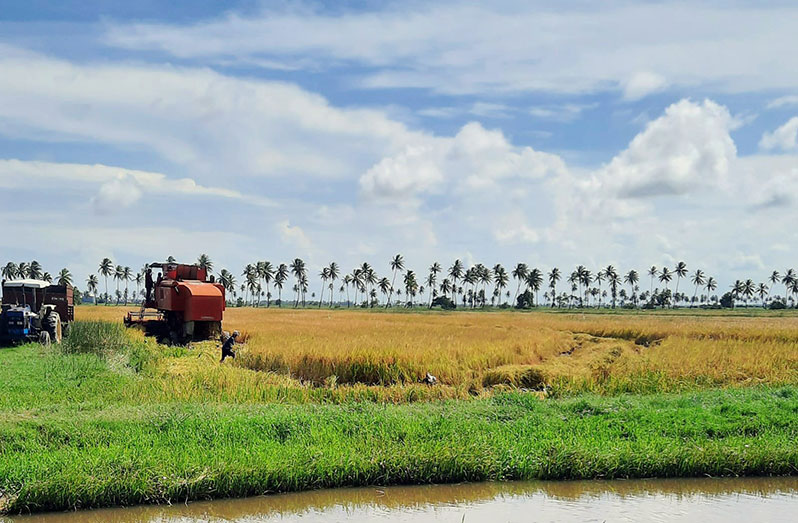–back in the days it was ‘very hard work’, recall siblings in the business
By Cindy Parkinson
AS the celebration of Agriculture Month continues, the Guyana Chronicle turns its focus to the Essequibo Coast, Region Two, which is a hub for bustling economic activities.
Essequibo and Essequibians are known for their large-scale production of rice, which is distributed throughout the Caribbean, Venezuela, the Netherlands and other countries around the world.
Hailing from the village of Riverstown on the Essequibo Coast, Lionel Maesh, 51, and his sister Leelawattie Singh, 48, grew up in a household with both of their parents being rice farmers.

However, their father, Doodnauth, passed away while Maesh and Leelawattie were very young, leaving their mother, Chandroutie, to take charge of the rice fields and to feed her two children.
Growing up without their father was challenging for them, but their mother, Chandroutie, ensured that she cultivated the rice lands while playing the roles of both mother and father in their lives. Mrs. Singh explained that “both boys and girls in our days worked and helped their parents either in the rice fields, with the cattle, poultry, or in the kitchen garden at home while still having to go to school”.
She also noted that rice farming for her and her brother in those days was “very different” in respect to the tilling of the land, dispersion of seedlings and harvesting and transporting the paddy to the rice mills.
“In our days with my mother, we used to attach a wooden plough to the bulls as we guided them through the acres of land until the soil was upturned. The seedlings were planted by hand and if there were bugs on the plants, my brother would mix pesticides in a bucket of water and go through the fields, using brushes to spread the mixture over the plants because we couldn’t afford a spray can at the time. Harvesting was done by hand using a grass knife, and the bundles were lifted onto our heads to be taken to the shed that was erected at the head of the rice fields.
We also used buckets to fill the bags with the paddy, took it home on bull carts and spread it on the corner of the road to dry. After the paddy was completely dried, we re-filled the bags and took them to the rice mill on the same bull carts.”
Leelawattie explained that, in those days, it was not only different but it was “very hard work”, but nevertheless, they had to do it in order to sustain themselves. With the advance of technology in machinery, Maesh does not have to work as much as he used to.

“Today there are tractors with ploughs and back blades that are attached to upturn the soil. We have machines to distribute the seedlings, machines to spray for bugs, combines for harvesting the rice and machines to even get rid of the weeds. There are special places for drying the paddy also. It is not done on the roadside anymore and we have trucks and tractors to transport the paddy to the rice mills,” said Maesh. He went on to say that life as a rice farmer was not as difficult as it once was, which is wonderful.
Prior to the introduction of machinery, most women supported their husbands in the rice fields, much like Maesh’s wife, Lesha, did. However, they now play a crucial role in making sure that their husbands’ food is prepared for the backdam and that they are welcomed home with love and compassion. Maesh declared, “It’s difficult but rewarding work.”
On behalf of the Region Two rice farmers, Leelawattie and Maesh also expressed gratitude to the Government of Guyana for its support of fertiliser and agriculture in general.


.jpg)











